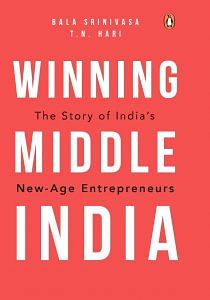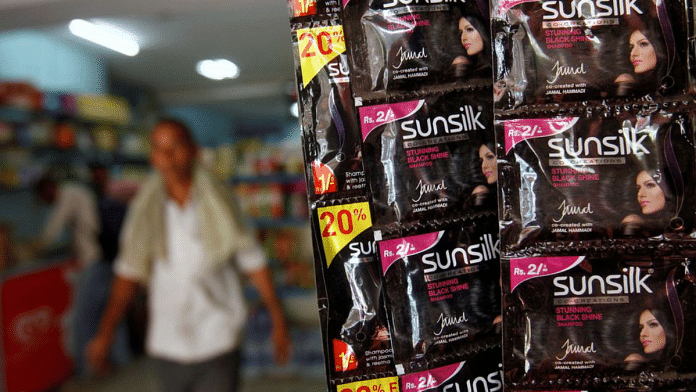It is far easier for first generation entrepreneurs in India to build tech companies that deliver products and services for consumers at the top of the pyramid than to build and deliver basic products and services profitably for a growing middle India.
Cuddalore is a small port town located in the southern Indian state of Tamil Nadu. Before the British renamed the town, it was called Koodalur, meaning ‘confluence’ in the Tamil language. It was the meeting place of four rivers. In the eighteenth century, Cuddalore was also the scene of intense action between the British and French forces, both on land and at sea. Chinni Krishnan was a farmer-turned-entrepreneur in Cuddalore who dabbled in pharmaceuticals and FMCG in the first few decades following independence. Sometime in the late 1970s, a few years before his demise, he came up with the idea of selling products in small sachets. In those days, talcum powder and Epsom salts were sold in tin containers or glass bottles, and the minimum quantity was nearly hundred grams.
He noticed that these products were not bought by the workmen in the farms and factories or the other low-income communities he had known so well, because they were considered expensive. In a bold move, he made a call to change the packaging and began selling talcum powder in twenty-gram packs and Epsom salt in five-gram sachets. He soon realized that even liquid products could be packed in sachets. The idea was a huge success. After seeing people who had never used a product before experiment with it because of the affordability of a small pack size, he was convinced that sachets would be the future.
Also read: When Muslim League and Congress agreed to Partition plan ‘behind the scenes’
Chinni Krishnan was a great innovator, but the idea of selling shampoo in sachets would be marketed and popularized by his iconic son C.K. Ranganathan who founded Chik India that launched the ‘Chik’ brand of shampoo named after his father Chinni Krishnan. This brand was targeted at the rural consumer who had so far been ignored by the then MNCs.
In 1998, the company held a contest among its employees to come up with a new name that reflected the company’s broader purpose, and the employees came up with ‘CavinKare’. ‘CavinKare’ incorporated Chinni Krishnan’s initials, and the word ‘Cavin’, in Tamil, stood for ‘beauty’. CavinKare has been one of the true pioneers of the Middle India market. The story of CavinKare is a story of product innovation and marketing. But
most importantly, it reflected it reflected a deep understanding of the consumer psyche.
When the case study was discussed, the obvious question that everyone in our MBA class came up with was, if the price per millilitre of shampoo packed in a small sachet was the same (or actually a tad higher) as that of the shampoo packed in large bottles, then why would it appeal to the low-income consumer? And how could the manufacturer sell shampoo packed in sachets at the same (or nearly the same) price when the distribution costs would be much higher per millilitre of shampoo sold in sachet form for the obvious reason that it had to be shipped to thousands of mom-and-pop stores in small towns and villages?
Also read: She is not your lady, you talk too much—what Indian judges have said to women in the courtroom
Buying a few sachets for occasional use or for special occasions, when it came to products like talcum powder, seemed plausible. The per capita consumption of shampoo (in sachets) by this segment of low-income consumers was, quite understandably, much lower than that of the high-end consumers (of larger pack sizes), but the number of low-income consumers was large enough to constitute a big market. It was also observed that some of the consumers who bought sachets would soon upgrade to larger pack sizes as their income levels went up. The small pack sizes were a good way to get first time consumers to try out a product. Companies also soon figured out the right pricing strategy at the intersection of a fair profit for the company and affordability of for the consumer.
It was also observed that, as these consumers climbed up the socio-economic ladder, they would graduate to buying the same product in higher pack sizes. The MNCs that operated in India had so far chosen to believe that the low-income consumers simply could not afford their products and hence were not worth targeting. They had stayed away from this market. But seeing the success of Chinni Krishnan’s experiment, the MNCs, especially the likes of Hindustan Unilever (the Indian subsidiary of Unilever), were quick to jump on to this bandwagon.
The word ‘sachet’, over a period of time, turned out to be a metaphor for ‘small pack size’ and an answer to the aspirations of those at the bottom and middle of the pyramid. Soon, soft drinks, biscuits, snacks, nutrition and food products would all be sold in small packs, in addition to the regular pack sizes. Chinni Krishnan and CavinKare figured out a door into Middle India using ‘first principles’ thinking. The customer often does not have an affordability problem but a cash flow problem.

This excerpt from ‘Winning Middle India’ by Bala Srinivasa and T.N. Hari has been published with permission from Penguin India.



